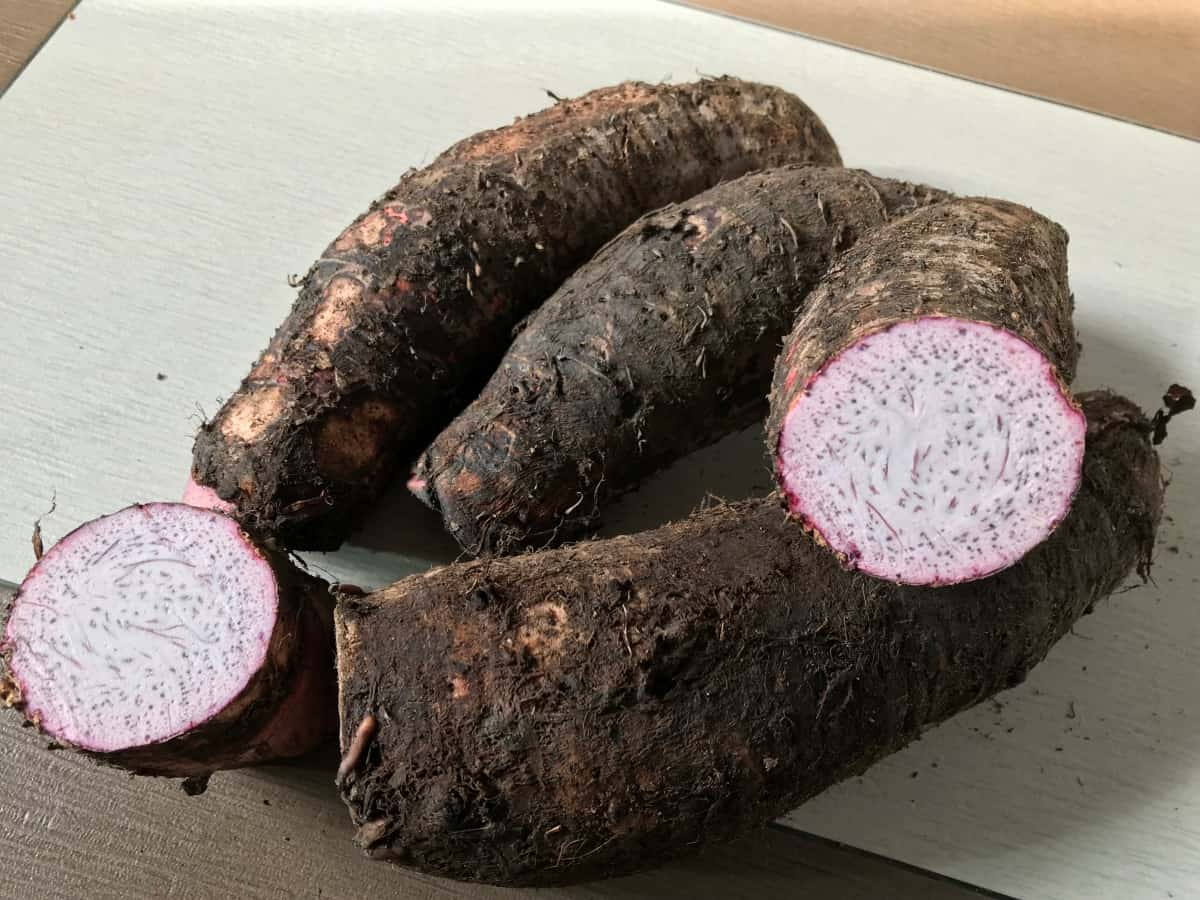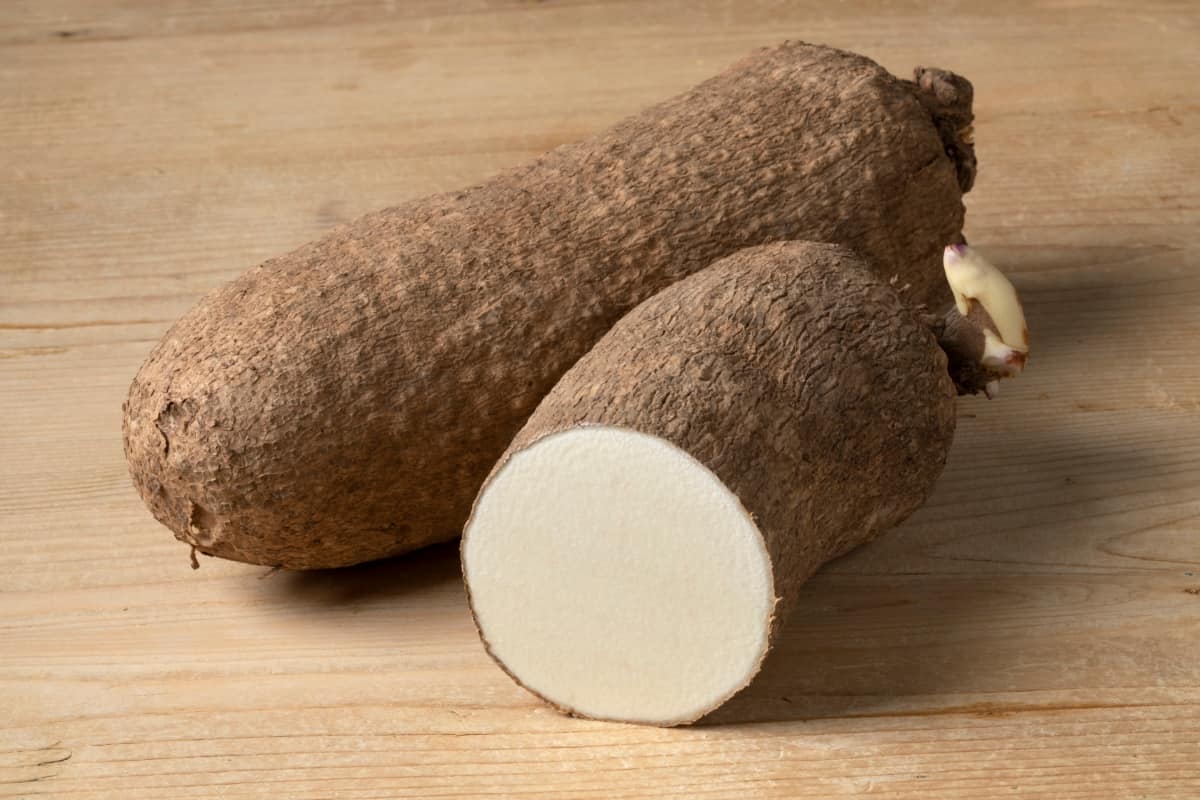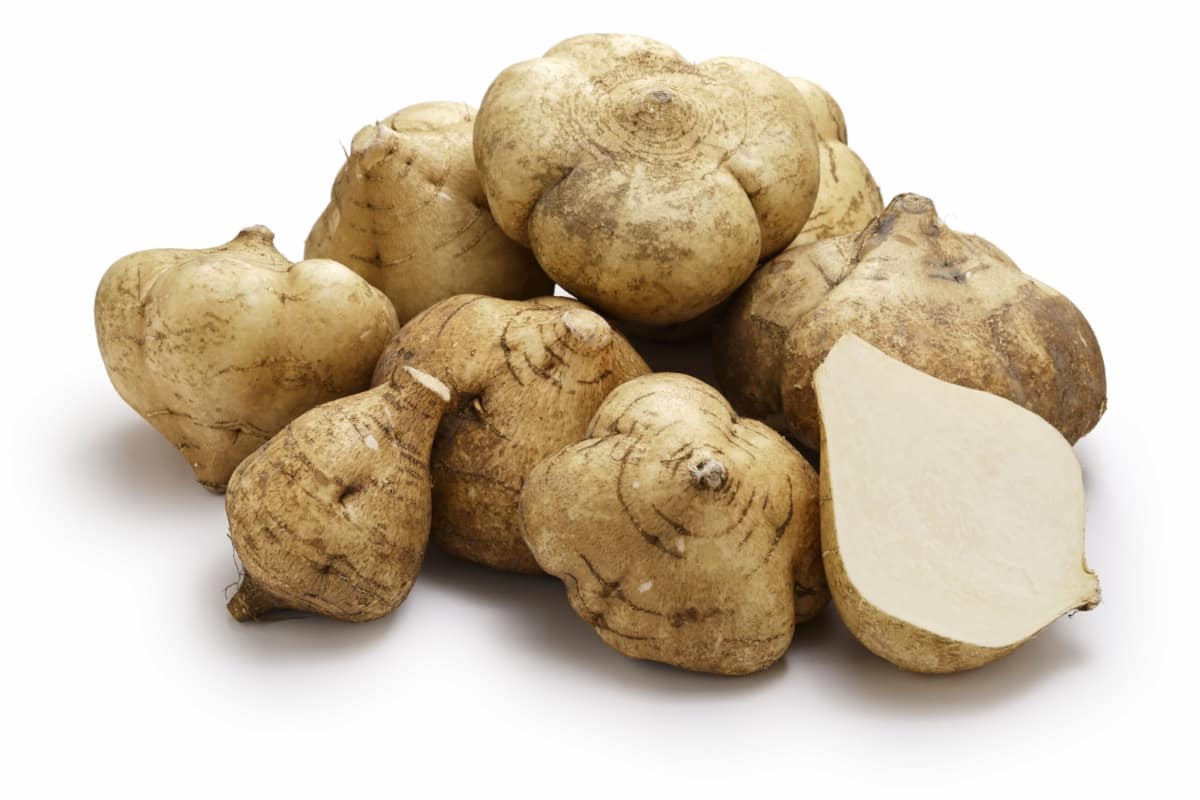Yams, a staple in many cultures, are tuberous crops with a rich history and diverse species. The yam family is characterized by its large tubers and vines, serving as a significant food source globally. Yam cultivation faces challenges like pests and diseases, requiring effective control measures.

Various species, including the white yam, African yam, and others, each have unique botanical characteristics and uses, from culinary to medicinal. Growing yams involves understanding their specific growing conditions, and managing issues like yam diseases and control is crucial for successful cultivation.
Different Types of Yams
Dioscorea Alata (White Yam)
The white yam, known for its appealing flavor and texture, thrives in well-drained, sandy loam soils. A tropical or subtropical environment with sufficient rain and an extended growing period is necessary. To cultivate this yam, plant the tubers in mounds or ridges after the last frost, ensuring they receive full sunlight.
Regular watering and weeding, combined with the application of organic fertilizers, enhance growth. Pest control is essential, as the white yam is susceptible to beetle and nematode attacks. To prevent diseases, rotate crops and use disease-free planting material.
Dioscorea Rotundata (African Yam)
The African yam, a significant crop in West Africa, prefers a warm climate with a distinct dry season for dormancy. It thrives in nutrient-rich, well-draining soil with a neutral pH. Planting is usually carried out at the onset of the rainy season. The African yam requires consistent moisture, especially during tuber formation. Staking is necessary for supporting the vines. To mitigate pest and disease risks, such as anthracnose and yam mosaic virus, employ crop rotation and use resistant varieties.
In case you missed it: How to Grow Shankhpushpi Plant: A Step-By-Step Guide

Dioscorea Cayenensis (Yellow Guinea Yam)
Yellow Guinea yam, characterized by its yellow flesh, favors tropical climates with high humidity and rainfall. It demands fertile, well-drained soils with good organic content. Planting should occur at the beginning of the wet season, with stakes provided for vine support. Regular watering and fertilization are vital for optimal growth. Pests like yam beetles and diseases like tuber rot can be managed through crop rotation, proper sanitation, and the use of certified seeds.
Dioscorea Esculenta (Lesser Yam)
Lesser yam, a smaller species, is adaptable to a range of climates but prefers a humid, tropical environment. It flourishes in sandy to loamy soils with good drainage. It is advisable to commence planting at the start of the rainy season while ensuring a consistent and moderate water supply. It’s less prone to pests and diseases, making it a more resilient choice for yam growers. Regular weeding and the application of organic fertilizers encourage healthy tuber development.
Dioscorea Bulbifera (Air Potato)
The air potato, known for its aerial tubers or bulbils, grows well in a variety of soil types but prefers rich, well-drained soils. It requires a warm, moist climate with indirect sunlight. Planting the bulbils in the early rainy season ensures good growth. Adequate spacing is important to prevent overcrowding and reduce disease risk. Regular monitoring for pests like weevils and maintaining good field hygiene helps control the spread of disease.
Dioscorea Opposita (Chinese Yam)
The Chinese yam, a cold-tolerant species, thrives in temperate zones. It prefers sandy loam soils with good drainage and organic matter. Planting is done in spring and the yam benefits from mulching to retain soil moisture and control weeds. This species requires less water compared to tropical yams. Pest control is essential, as it’s prone to attacks from nematodes and beetles. Employing crop rotation and using healthy planting materials help in preventing disease outbreaks.
In case you missed it: How to Prevent Cranberry Fruit Rot Naturally: How to Control with Natural and Organic Treatment

Dioscorea Dumetorum (Bitter Yam)
Bitter yam, known for its bitter taste, is suited to tropical climates with well-distributed rainfall. It thrives in fertile, well-drained soil and is typically planted at the onset of the rainy season, with stakes offered for vine support. Consistent watering and the application of organic fertilizers are crucial for growth. To control pests and diseases, use disease-free planting material and practice good field sanitation.
Dioscorea Trifida (Cush Cush Yam)
Cush Cush yam, a lesser-known variety, is best suited for tropical climates with consistent moisture. It thrives in fertile, well-drained soil, often found along riverbanks or in areas with high organic matter. To ensure proper drainage, choose robust tubers when planting and place them in raised beds or mounds.
Cush Cush yam requires a moderate amount of sunlight and benefits from partial shade. Regular watering, especially during dry spells, is crucial for tuber development. It’s relatively resistant to pests and diseases, but regular monitoring is advisable. Fertilize with a balanced blend of nutrients to encourage vigorous growth. Harvesting is done when the leaves start to yellow, indicating tuber maturity.
Dioscorea Japonica (Japanese Mountain Yam)
Japanese Mountain yam, adapted to cooler climates, grows well in temperate zones and higher elevations. It prefers well-drained, loamy soils with a slightly acidic to neutral pH. Planting should be done in early spring, after the risk of frost has passed. This yam variety requires a moderate amount of water, with careful attention to avoid waterlogging.
It grows best in partial shade, as excessive sunlight can stress the plant. Staking or trellising is essential for supporting its growth habit. Japanese Mountain yam is susceptible to some pests and diseases common to yams, so regular inspections and preventive measures like crop rotation are important. Fertilization should be moderate, focusing on organic matter enrichment.
Dioscorea Mexicana (Mexican Yam)
Mexican yam, known for its unique caudex and ornamental value, thrives in warm, subtropical climates. It prefers well-draining, sandy loam soils rich in organic matter. Plant in a sunny spot, ensuring it gets plenty of sunlight, but consider providing some afternoon shade in warmer regions for optimal growth. Watering should be regular but not excessive, as the plant is drought-tolerant once established.
In case you missed it: Soil Preparation and Planting Steps in Broccoli Farming: Guide for First-Time Broccoli Farmers

The Mexican yam is relatively pest-resistant but can be affected by root rot if overwatered. Fertilize lightly with a balanced fertilizer to encourage growth. It’s important to provide space for the caudex to develop. Harvesting is usually not the primary goal with this variety, as it is often grown for its ornamental qualities.
Conclusion
Each yam species, from the Cush Cush to the Mexican yam, has its unique characteristics and requirements. Understanding these specifics is vital for successful cultivation, whether for culinary, medicinal, or ornamental purposes. Adapting cultivation practices to the local climate, soil type, and water availability is essential. Regular monitoring for pests and diseases, along with appropriate control measures, ensures healthy growth. Yams, with their diverse varieties, offer a rich tapestry of flavors, textures, and uses, contributing significantly to food security and cultural heritage around the world.
- Feed Your Flock for Less: Top 10 Tips to Save on Chicken Feed
- Ultimate Guide to Ossabaw Island Hog: Breeding, Raising, Diet, and Care
- Hatching Answers: The Top 10 Reasons Your Chickens Aren’t Laying Eggs
- Eggs and Economics: Breaking Down the Cost of Raising Backyard Chickens
- Defend Your Greens: Proven Methods to Keep Iguanas Out of Your Garden
- Ultimate Guide to Cinnamon Queen Chicken: A Comprehensive Guide for Beginners
- Ultimate Guide to California Tan Chicken: Breeding, Raising, Diet, Egg-Production and Care
- Ultimate Guide to Marsh Daisy Chicken: Breeding, Raising, Diet, and Care
- 10 Types of Chicken Farming Businesses You Can Start for Profits